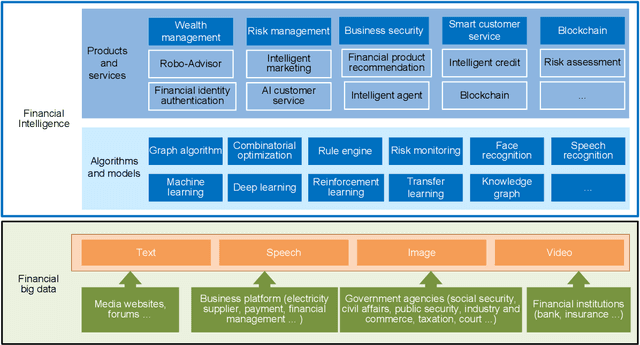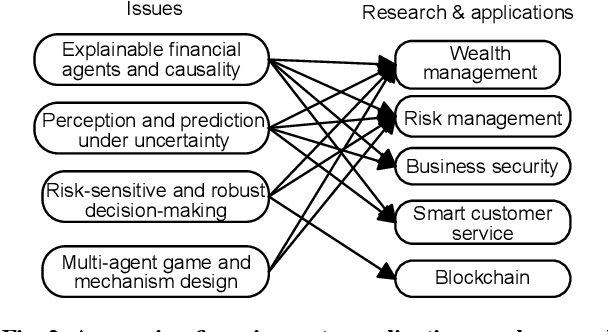Mengying Zhu
Modeling Orders of User Behaviors via Differentiable Sorting: A Multi-task Framework to Predicting User Post-click Conversion
Jul 18, 2023Abstract:User post-click conversion prediction is of high interest to researchers and developers. Recent studies employ multi-task learning to tackle the selection bias and data sparsity problem, two severe challenges in post-click behavior prediction, by incorporating click data. However, prior works mainly focused on pointwise learning and the orders of labels (i.e., click and post-click) are not well explored, which naturally poses a listwise learning problem. Inspired by recent advances on differentiable sorting, in this paper, we propose a novel multi-task framework that leverages orders of user behaviors to predict user post-click conversion in an end-to-end approach. Specifically, we define an aggregation operator to combine predicted outputs of different tasks to a unified score, then we use the computed scores to model the label relations via differentiable sorting. Extensive experiments on public and industrial datasets show the superiority of our proposed model against competitive baselines.
HCFRec: Hash Collaborative Filtering via Normalized Flow with Structural Consensus for Efficient Recommendation
May 24, 2022



Abstract:The ever-increasing data scale of user-item interactions makes it challenging for an effective and efficient recommender system. Recently, hash-based collaborative filtering (Hash-CF) approaches employ efficient Hamming distance of learned binary representations of users and items to accelerate recommendations. However, Hash-CF often faces two challenging problems, i.e., optimization on discrete representations and preserving semantic information in learned representations. To address the above two challenges, we propose HCFRec, a novel Hash-CF approach for effective and efficient recommendations. Specifically, HCFRec not only innovatively introduces normalized flow to learn the optimal hash code by efficiently fit a proposed approximate mixture multivariate normal distribution, a continuous but approximately discrete distribution, but also deploys a cluster consistency preserving mechanism to preserve the semantic structure in representations for more accurate recommendations. Extensive experiments conducted on six real-world datasets demonstrate the superiority of our HCFRec compared to the state-of-art methods in terms of effectiveness and efficiency.
Adaptive Portfolio by Solving Multi-armed Bandit via Thompson Sampling
Nov 14, 2019



Abstract:As the cornerstone of modern portfolio theory, Markowitz's mean-variance optimization is considered a major model adopted in portfolio management. However, due to the difficulty of estimating its parameters, it cannot be applied to all periods. In some cases, naive strategies such as Equally-weighted and Value-weighted portfolios can even get better performance. Under these circumstances, we can use multiple classic strategies as multiple strategic arms in multi-armed bandit to naturally establish a connection with the portfolio selection problem. This can also help to maximize the rewards in the bandit algorithm by the trade-off between exploration and exploitation. In this paper, we present a portfolio bandit strategy through Thompson sampling which aims to make online portfolio choices by effectively exploiting the performances among multiple arms. Also, by constructing multiple strategic arms, we can obtain the optimal investment portfolio to adapt different investment periods. Moreover, we devise a novel reward function based on users' different investment risk preferences, which can be adaptive to various investment styles. Our experimental results demonstrate that our proposed portfolio strategy has marked superiority across representative real-world market datasets in terms of extensive evaluation criteria.
FinBrain: When Finance Meets AI 2.0
Aug 26, 2018



Abstract:Artificial intelligence (AI) is the core technology of technological revolution and industrial transformation. As one of the new intelligent needs in the AI 2.0 era, financial intelligence has elicited much attention from the academia and industry. In our current dynamic capital market, financial intelligence demonstrates a fast and accurate machine learning capability to handle complex data and has gradually acquired the potential to become a "financial brain". In this work, we survey existing studies on financial intelligence. First, we describe the concept of financial intelligence and elaborate on its position in the financial technology field. Second, we introduce the development of financial intelligence and review state-of-the-art techniques in wealth management, risk management, financial security, financial consulting, and blockchain. Finally, we propose a research framework called FinBrain and summarize four open issues, namely, explainable financial agents and causality, perception and prediction under uncertainty, risk-sensitive and robust decision making, and multi-agent game and mechanism design. We believe that these research directions can lay the foundation for the development of AI 2.0 in the finance field.
* 11 pages
 Add to Chrome
Add to Chrome Add to Firefox
Add to Firefox Add to Edge
Add to Edge